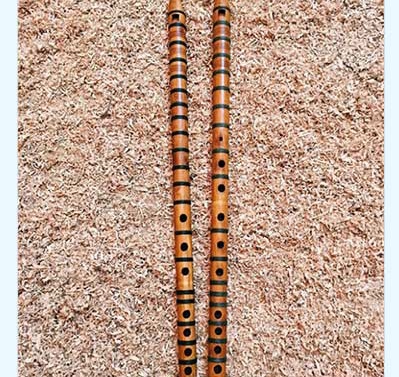The Donali is a pair of fipple flutes played simultaneously. They’re made of reed, typically around 25-30 centimeters long, and are traditionally played by men. One flute is called the “male” (نر) and the other the “female” (ماده). The male flute plays the melody, while the female flute provides harmony and rhythm.
History and Origin:The Donali is believed to have originated in Sindh and Balochistan of Pakistan and was brought to Sistan and Baluchistan, Iran, about 50 years ago. It’s considered an immigrant instrument in the region but has become an integral part of the local musical scene.
Playing Technique:Playing the Donali requires skill and coordination. Both flutes are held horizontally in the mouth, with the player’s thumbs covering the finger holes on the top and the other fingers controlling the holes on the bottom. Different blowing techniques and finger combinations create a variety of sounds and melodies.
Sound and Significance:The Donali produces a unique, melancholic sound that blends well with other traditional instruments like the ghaychak (a bowed string instrument) and the dhol (a double-headed drum). It’s often featured in folk music, love songs, and Sufi music, adding a layer of depth and emotion to the performance.
Cultural Importance:The Donali is more than just an instrument; it’s a symbol of Sistan and Baluchistan’s cultural identity. Its music evokes the region’s rich history, traditions, and emotions. It’s played at weddings, ceremonies, and social gatherings, bringing people together and creating a joyful atmosphere.
Modern Use:The Donali is not just confined to traditional music. Today, it’s increasingly being used in contemporary music genres, blending with other instruments and styles. This adds a new dimension to the instrument’s legacy and ensures its continued relevance in the evolving musical landscape of Sistan and Baluchistan.


